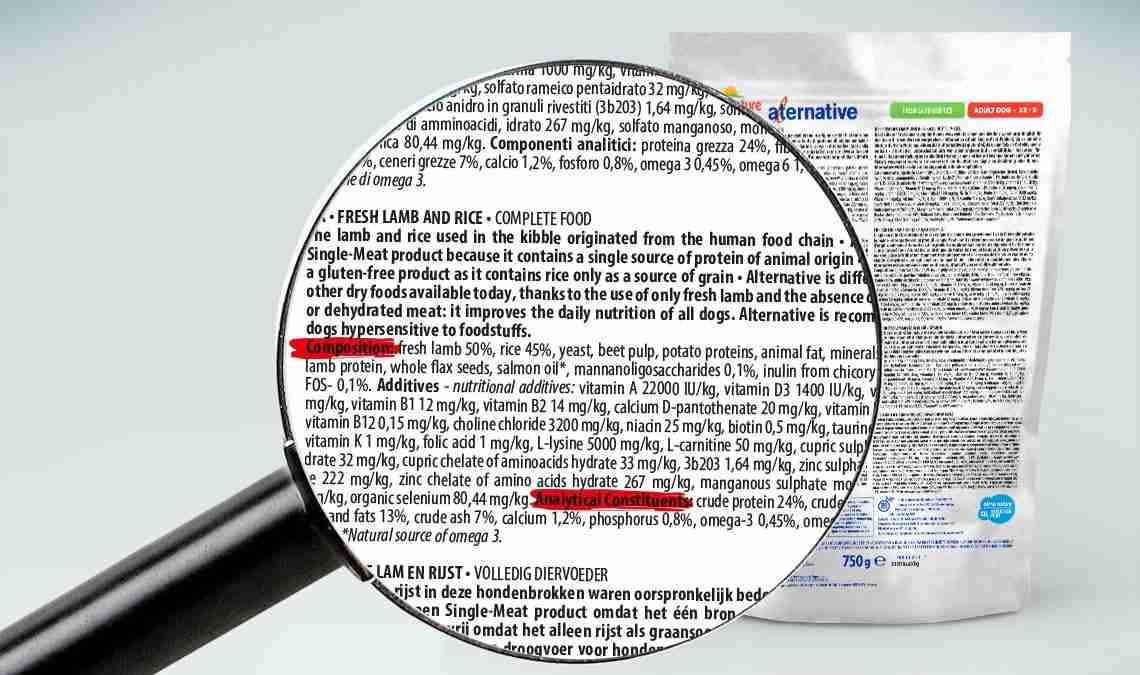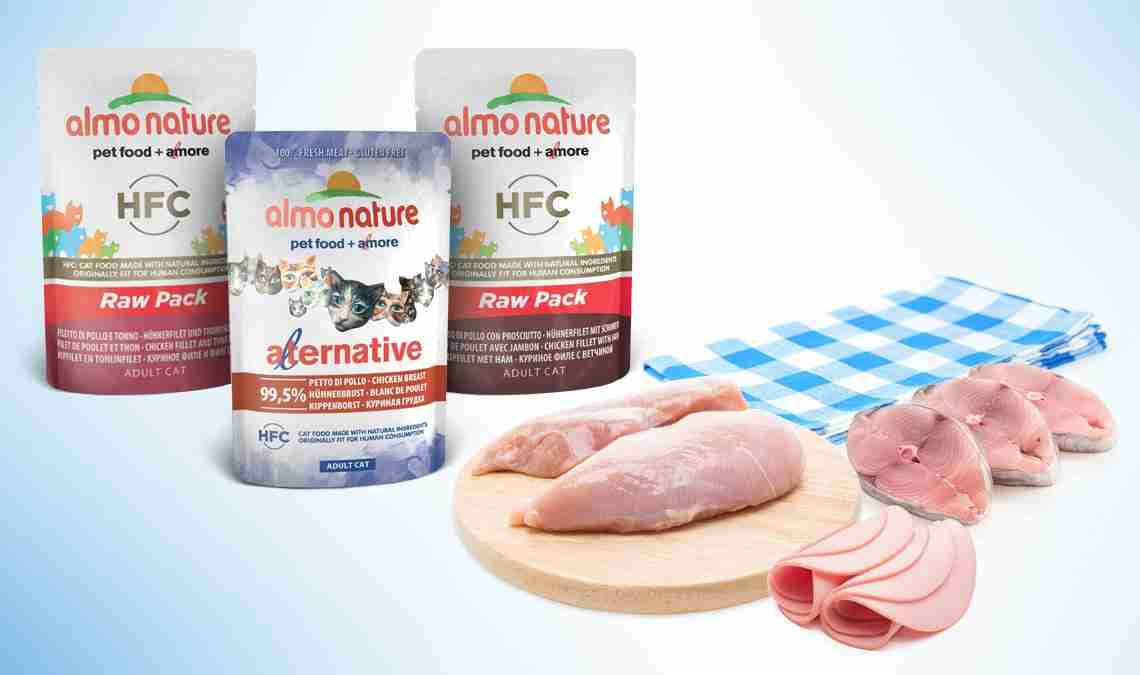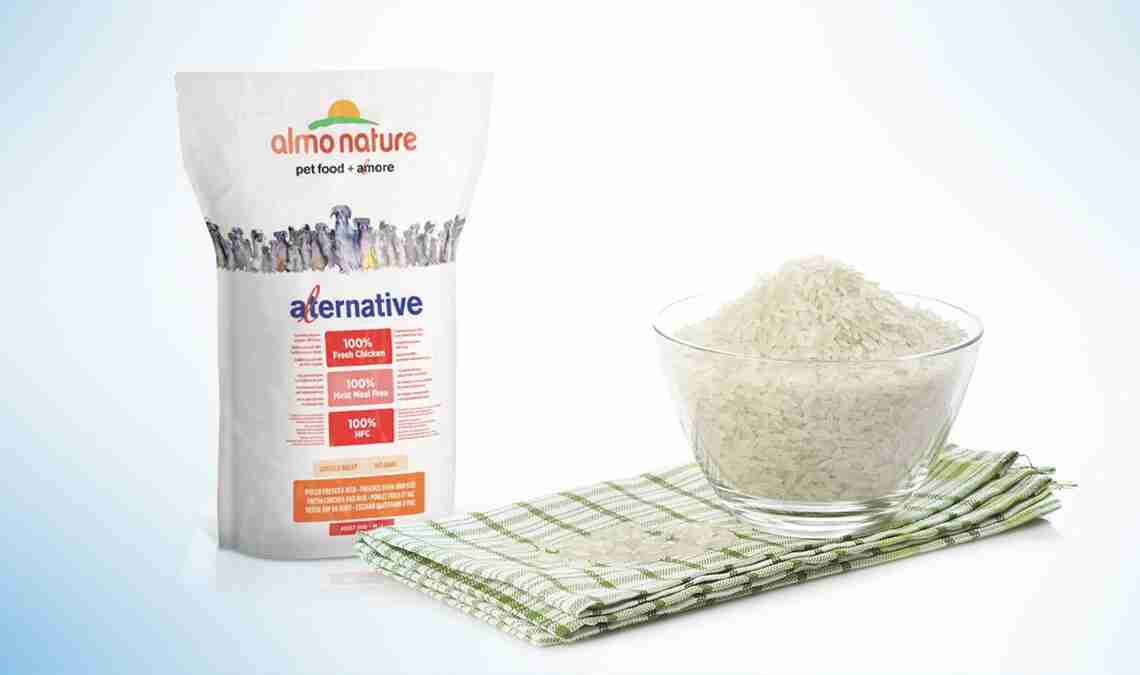Analytical constituents and composition: how to read & understand them

"I bought your Alternative dry food for my dog, but it contains 50% meat! Isn't that too much protein?"We often receive such questions from consumers who are trying to make sense of the myriad of information on pet food packaging and align with everything they have heard or read. It's easy to get confused, especially between the two main lists that make up a label, namely composition and analytical constituents:
Composition (Ingredients): defines, in descending order (according to weight), all ingredients in the recipe, meat, rice, vegetables, etc. The list of ingredients is important because it allows us to understand the quality of the raw materials used
Analytical constituents: this list shows the nutrient analysis of the finished product, defining the amount of protein, fibre, fats, etc. – the list of analytical constituents is just an index of quantity, not quality!
In practice therefore, the amount of meat in the recipe does not equate to protein intake. Reading the label of Alternative dry food for example, we read in the composition (ingredients) list " fresh chicken 50%", but the analytical constituents list, which measures the amount of protein in the entire recipe (i.e. taking into consideration all the proteins in the other ingredients and not just in the fresh HFC meat), indicates 24% protein (not 50%).The protein content of Alternative and Alternative 170 recipes for dogs is perfectly balanced to meet the nutritional needs of adult dogs.The big difference compared to other dry foods is the quality of the fresh meat, i.e. certified HFC from the human food chain. Meat quality affects the digestibility and assimilation of proteins. An example? Chicken feathers are rich in protein and, if analysed, would report a high percentage in a recipe's analytical constituents. But are they digestible? What is the bioavailability of a feather? Can a dog really assimilate the amount of protein needed for its well-being? Or will it be unable to digest the protein and therefore expel the protein in its faeces? Attention to quality should always be the very first product verification. The calculation of the nutritional characteristics can be considered later, after checking the bioavailability of the ingredients.
















